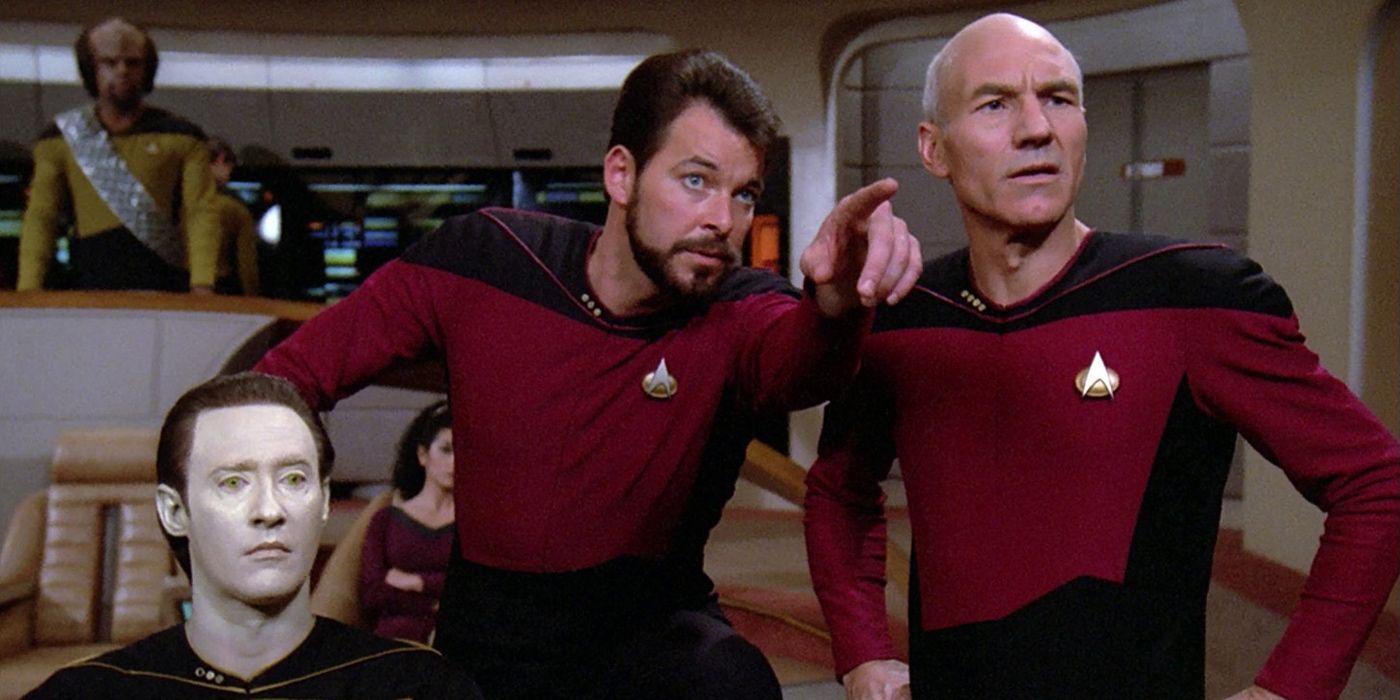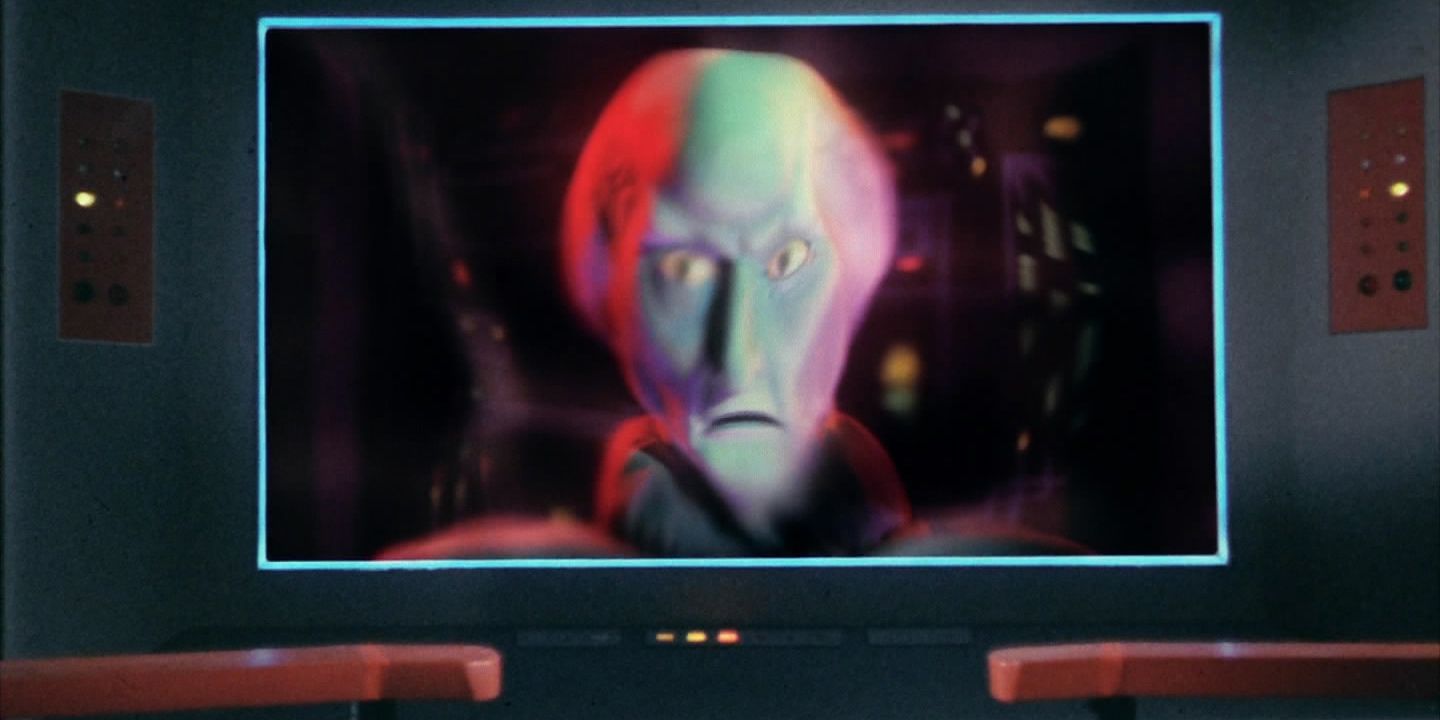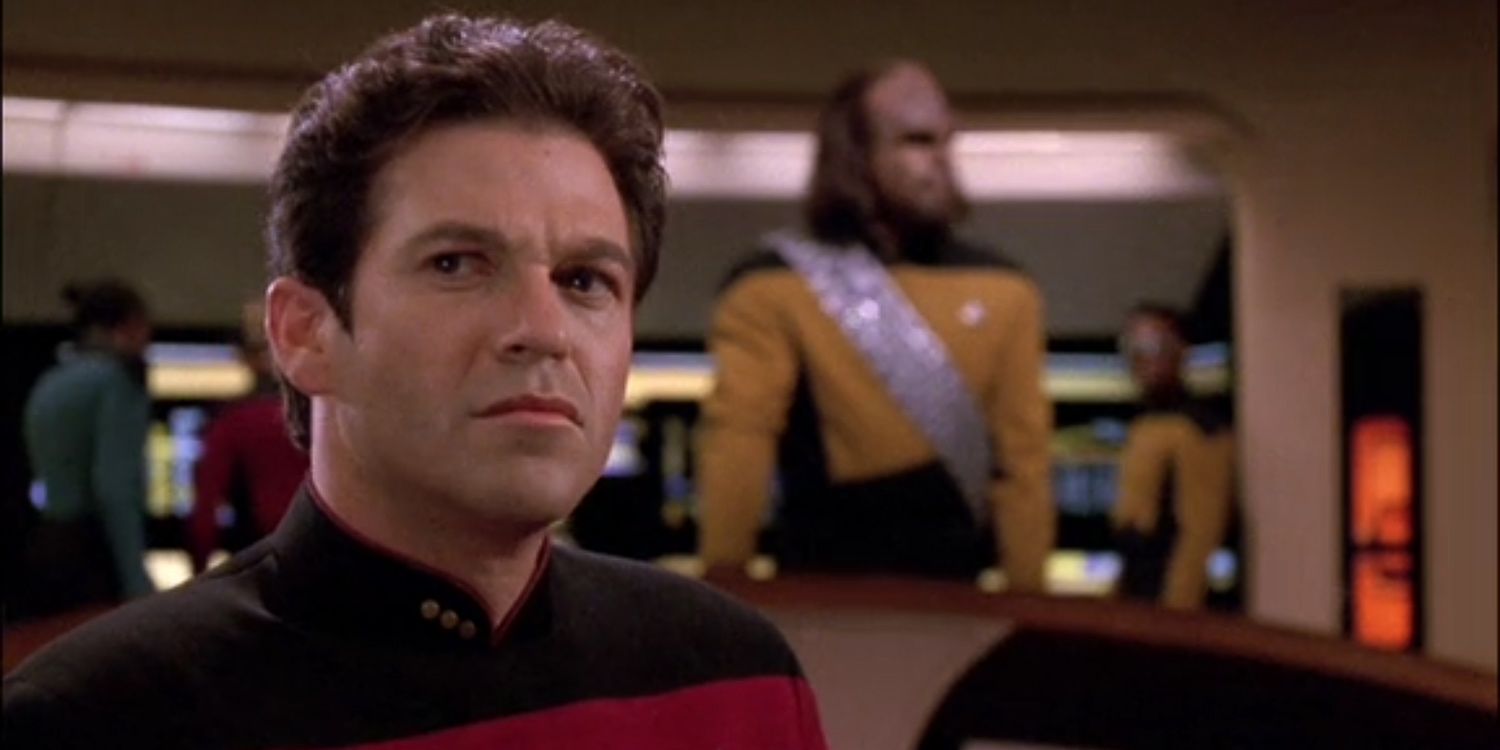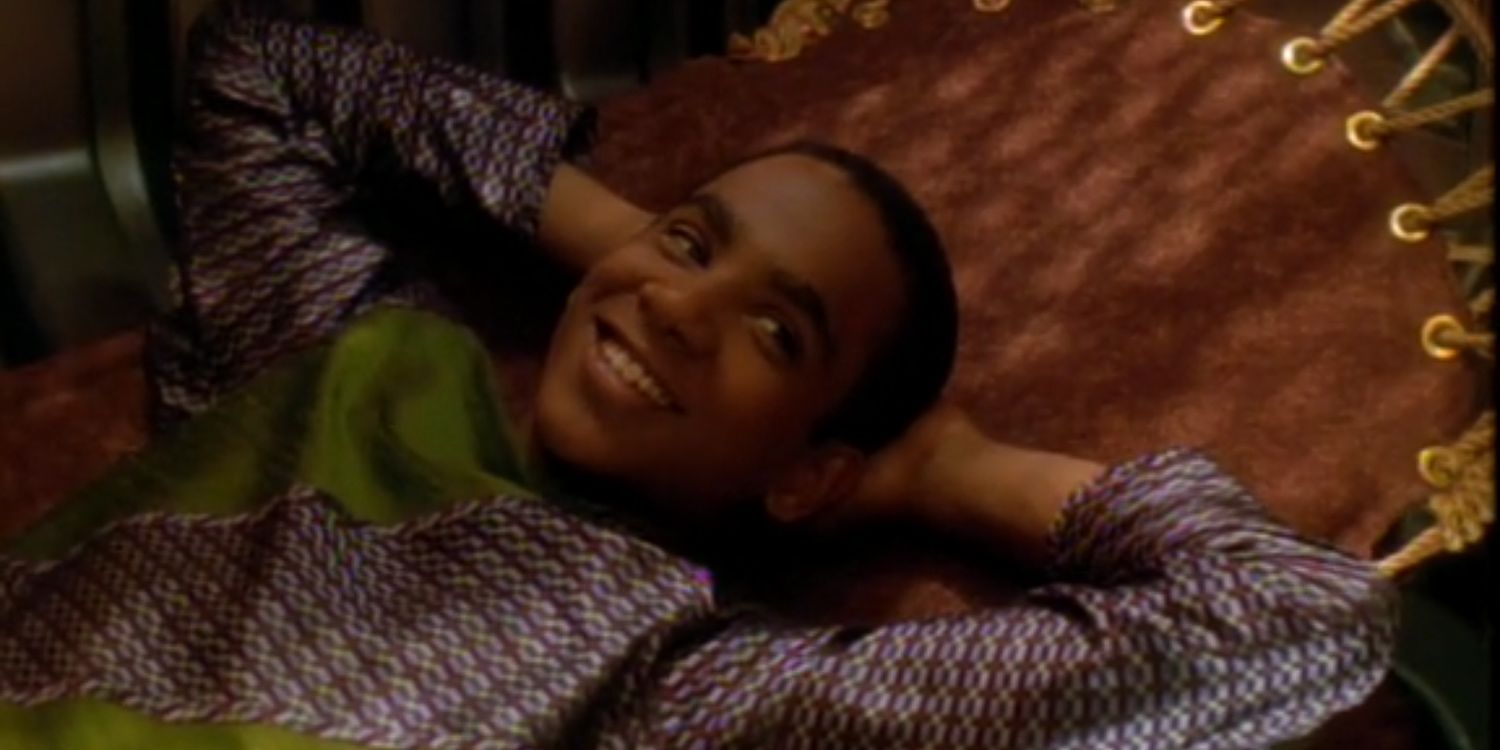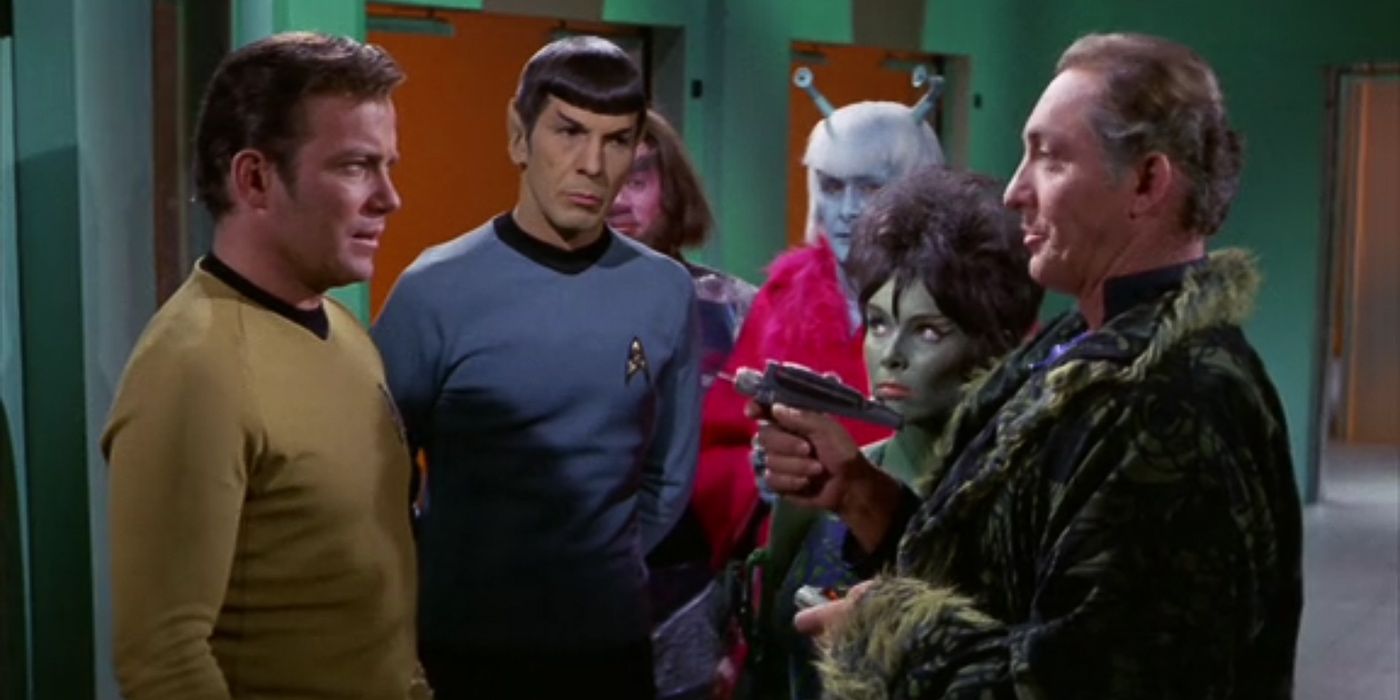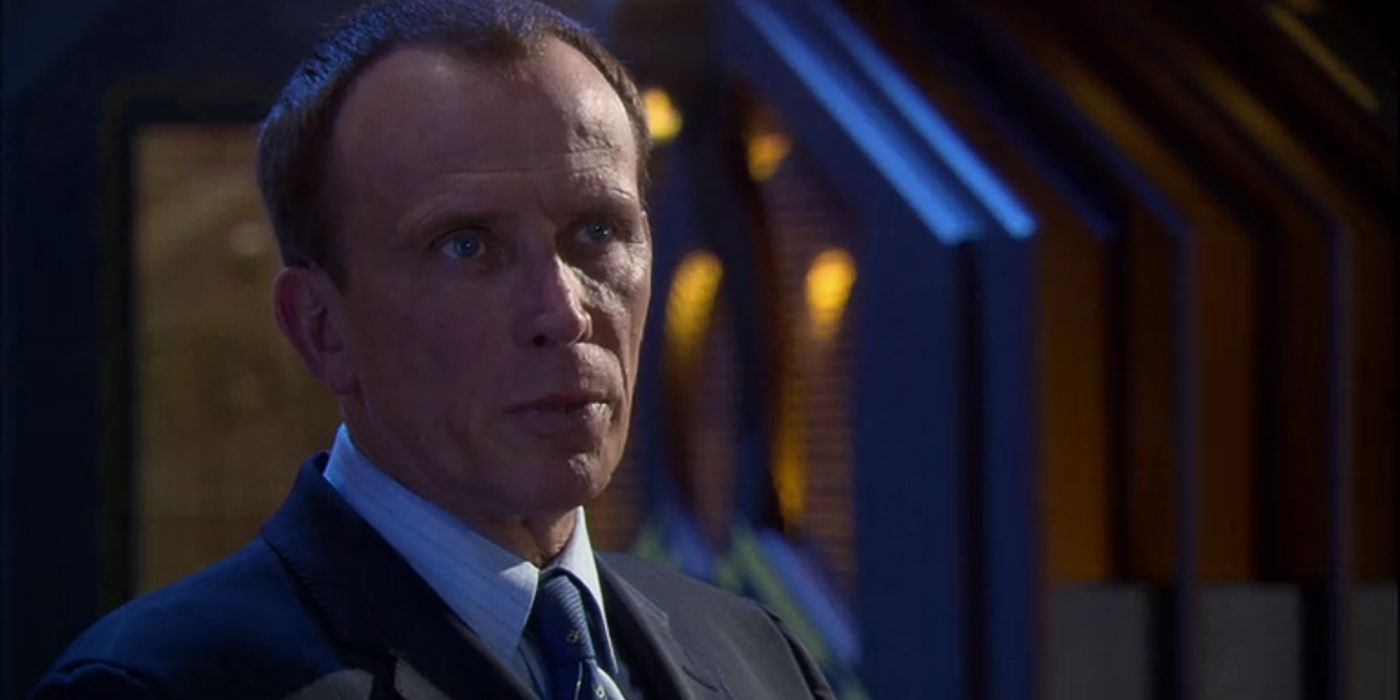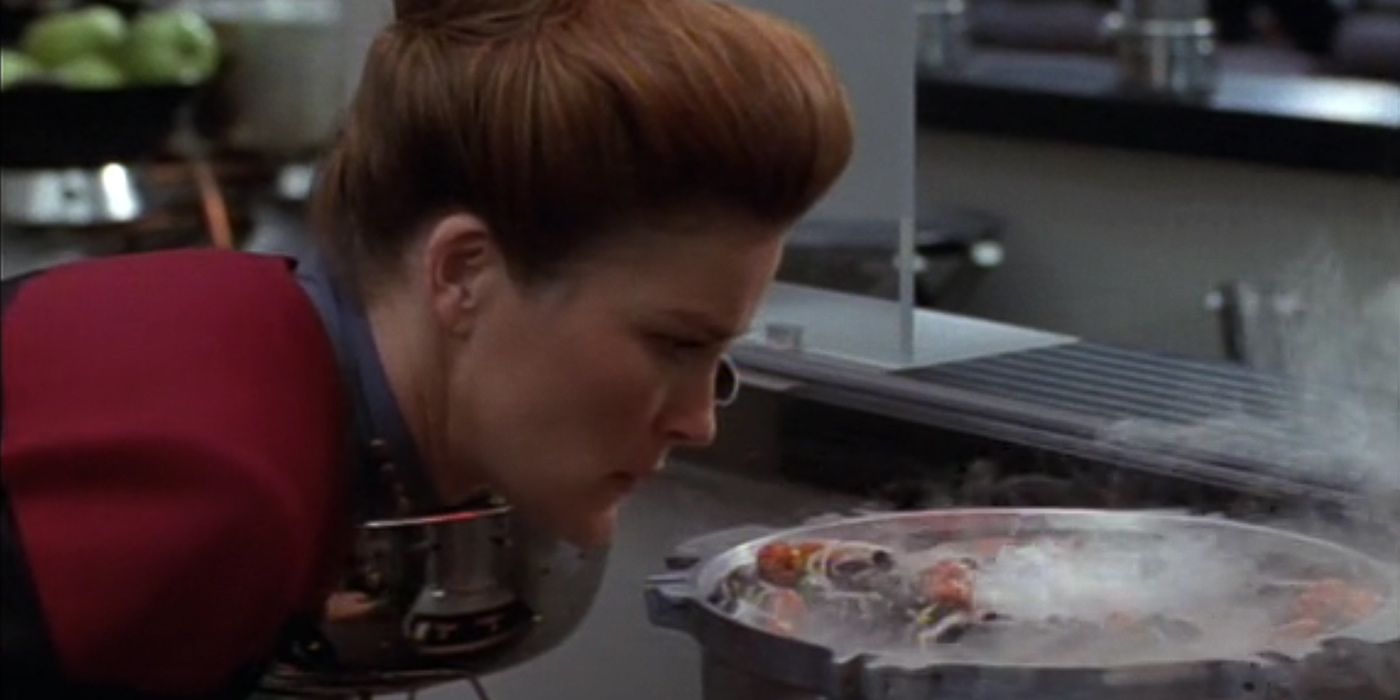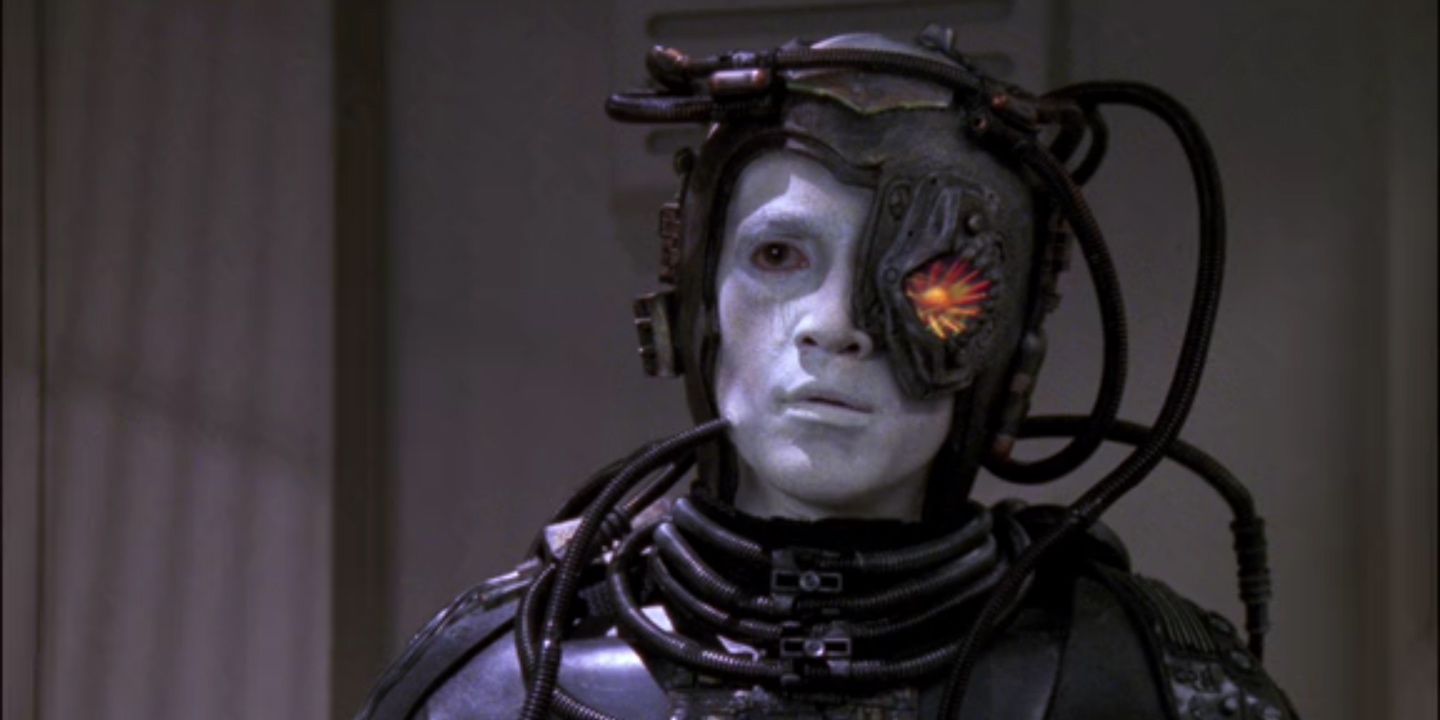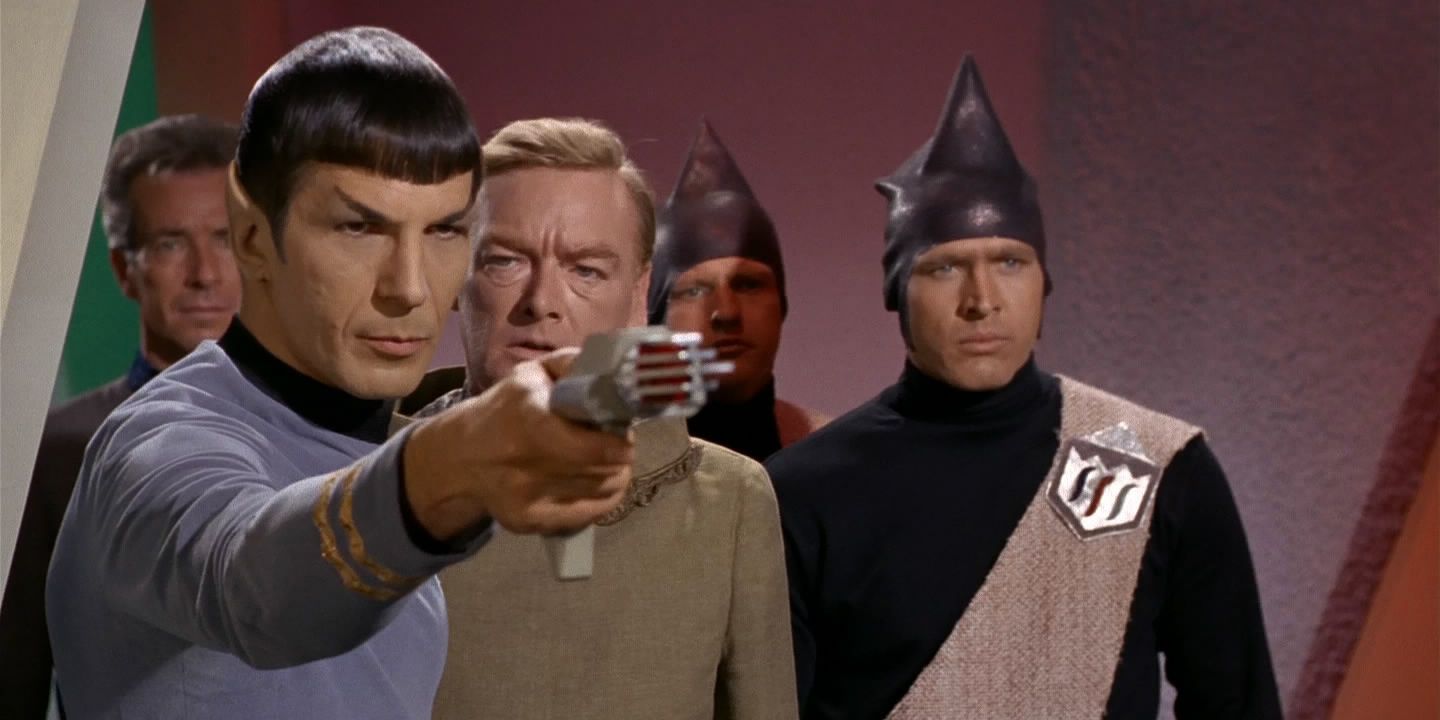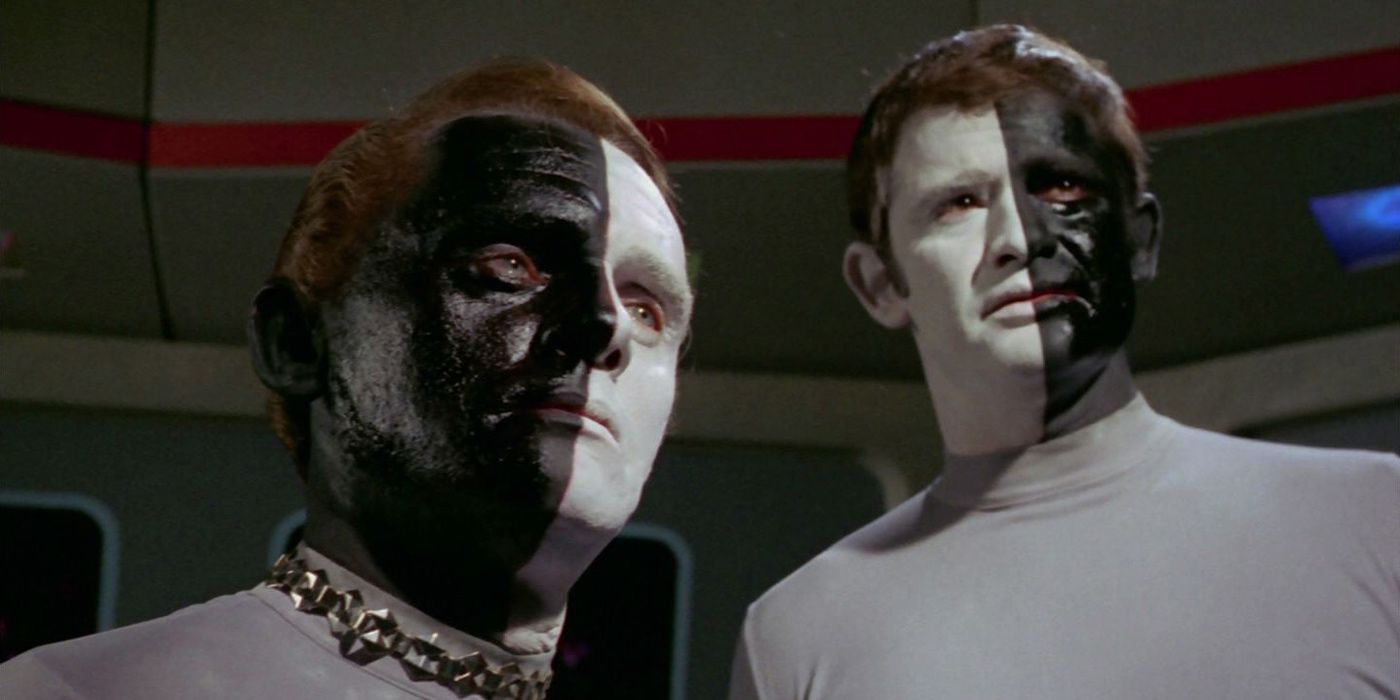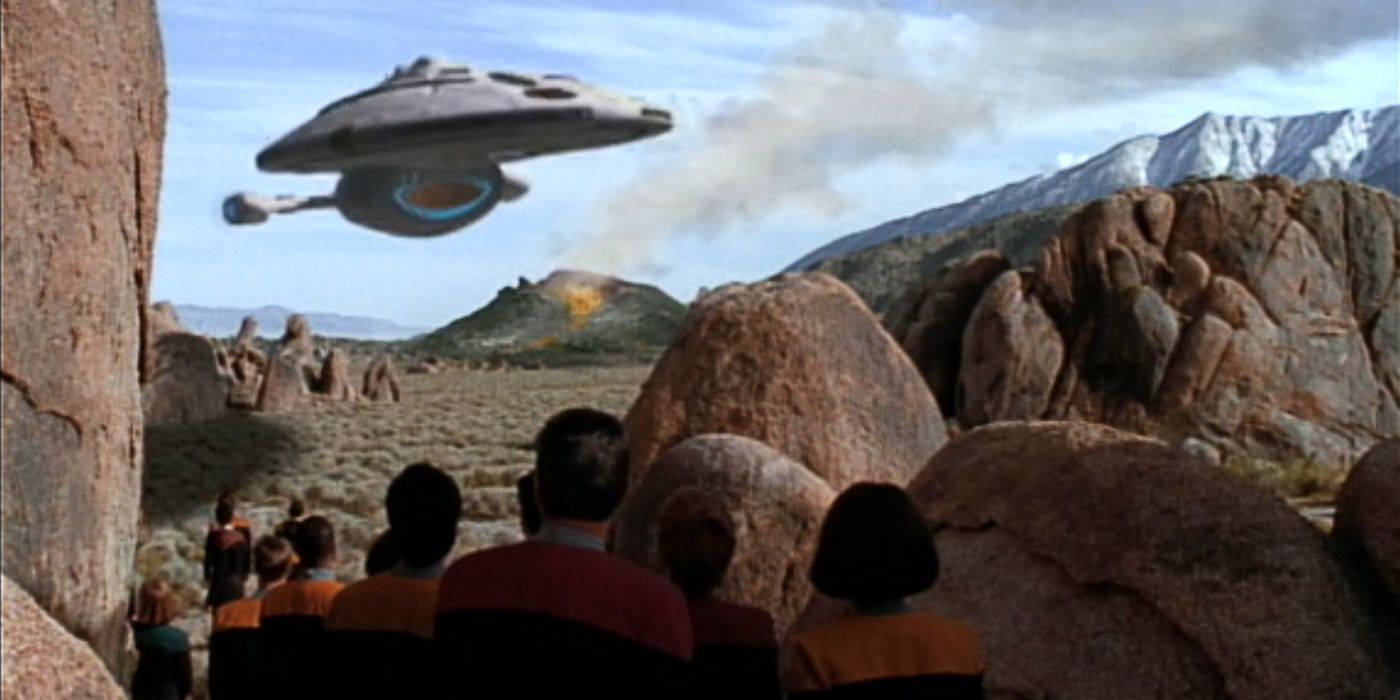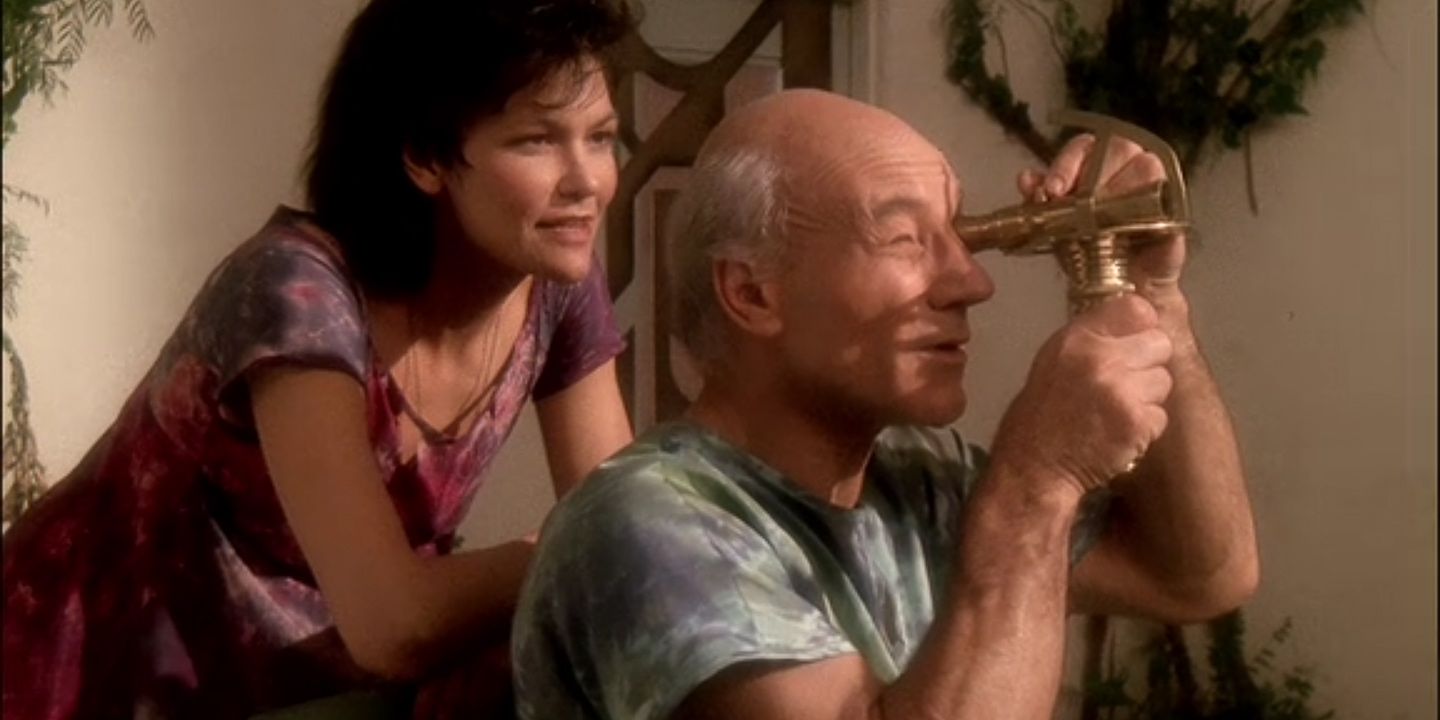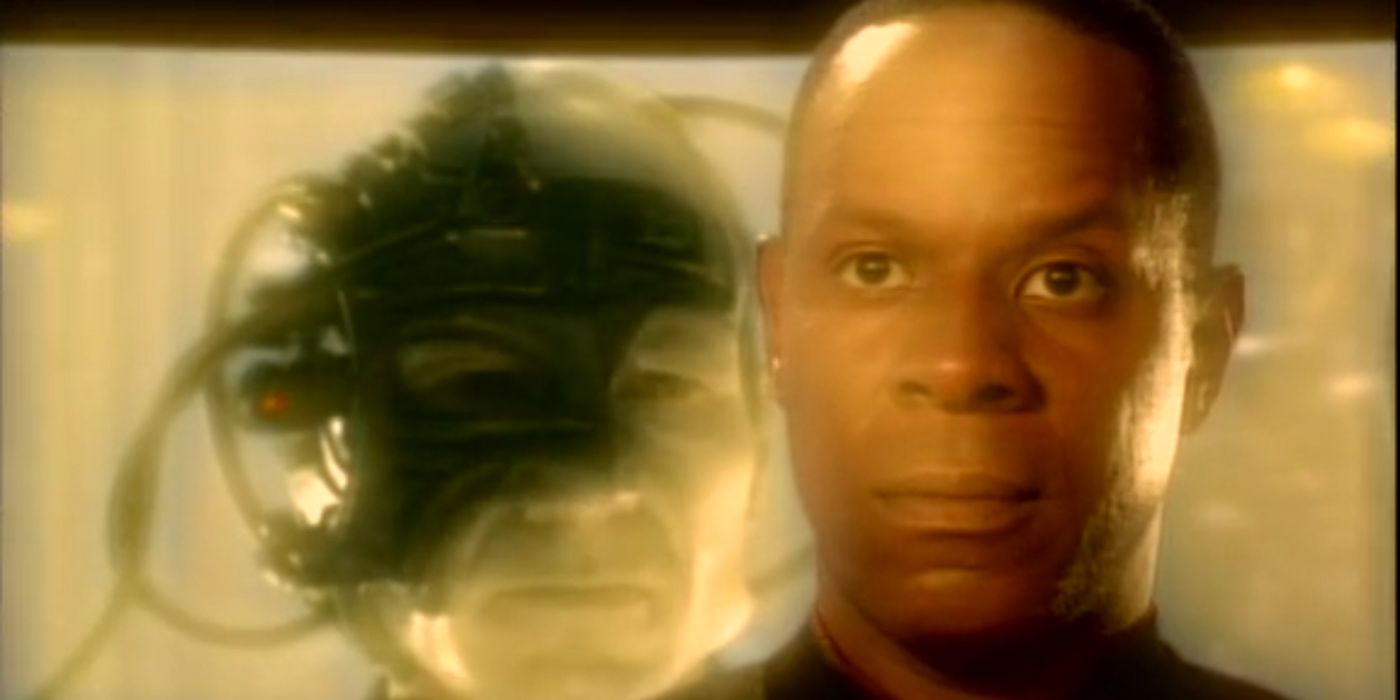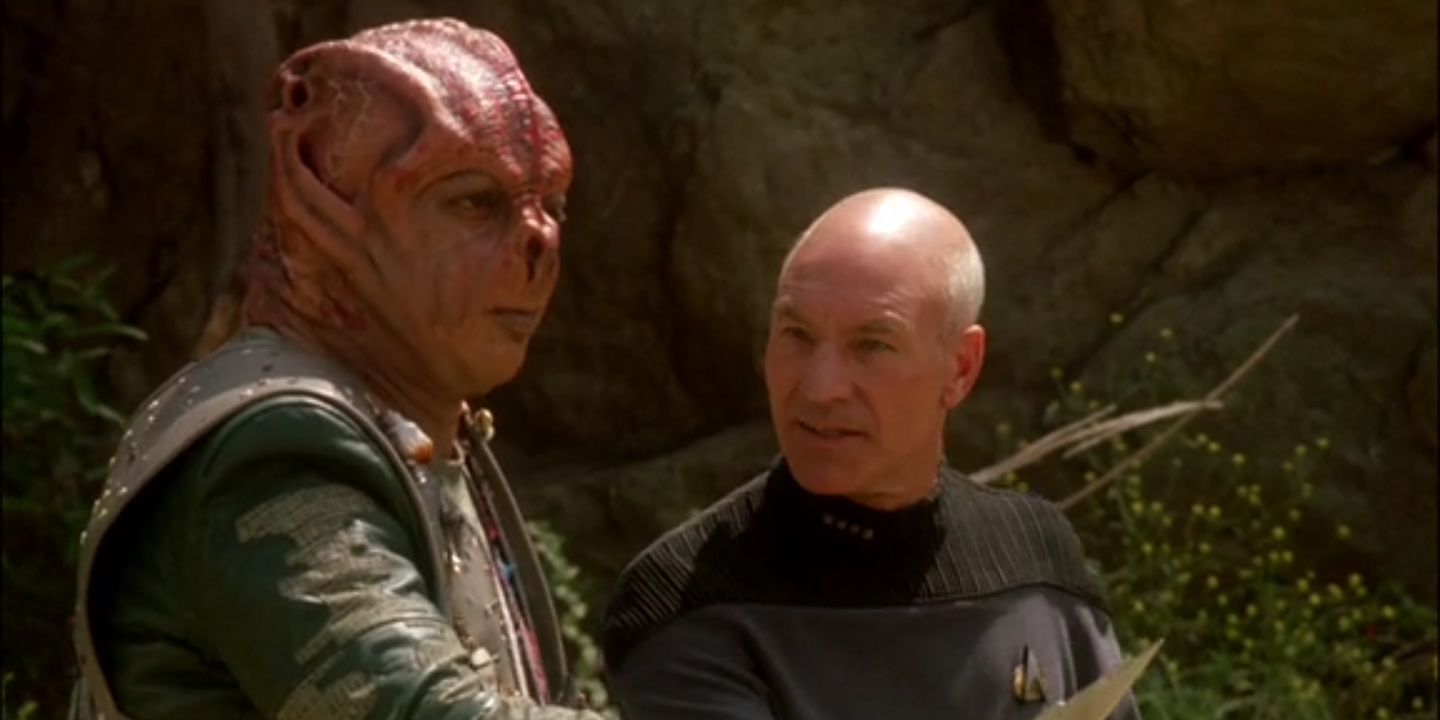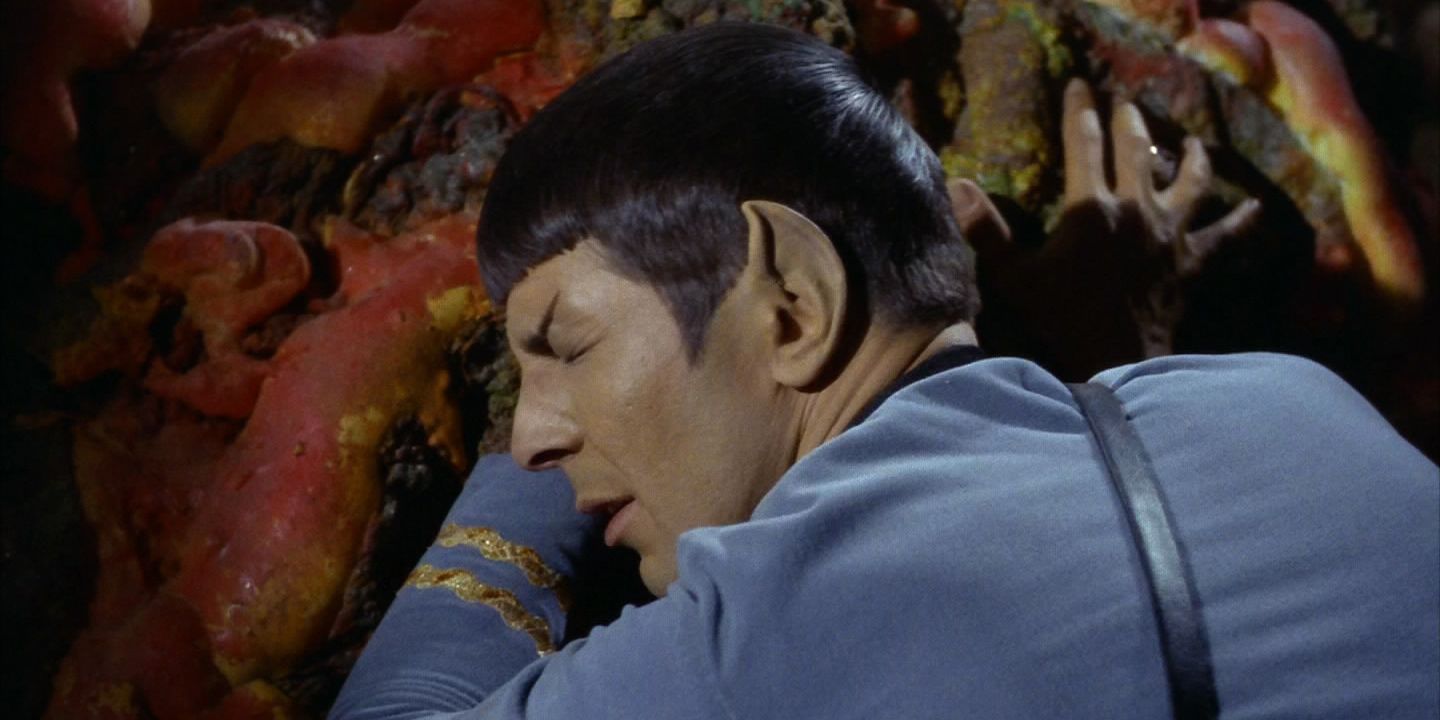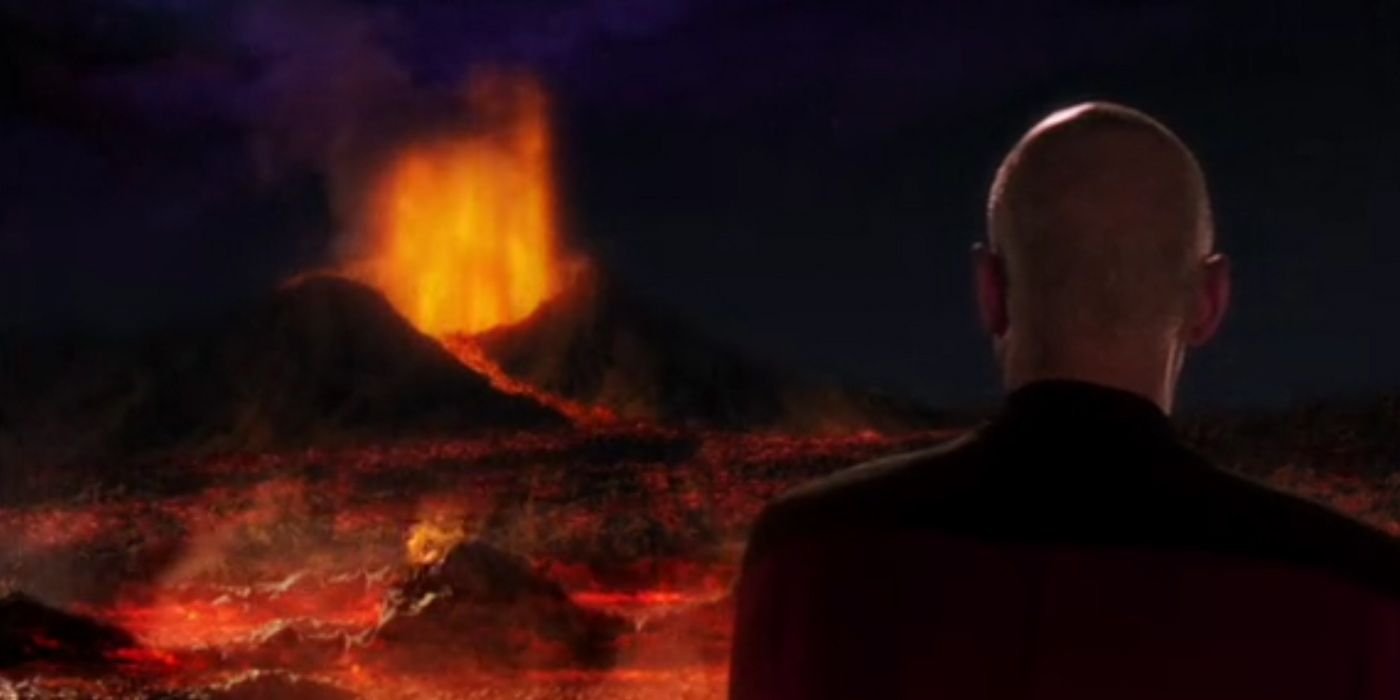Optimism. This was the defining theme of Star Trek when it was first created, and that philosophy is what sets it apart from so much of the other sci-fi that's out there. We had danger, we had dark episodes, we had tragedy, but the message of hope, diversity, and wisdom that show creator Gene Roddenberry believed in still resonates throughout all of the shows and movies that came afterwards.
As we enter 2017, in a country about to embark on tremendous change, it's a perfect time to take a look at episodes that remind us of the possibility that all the petty tendencies rising to the surface these days, no matter where one stands politically, will fade away one day and get left behind as we move into an exciting future. That's when we'll be ready to explore, and that, according to Star Trek, is our destiny.
So here, with a smattering of choices from every Star Trek TV series, are 15 Episodes To Give You Hope For The Future.
15. The Corbomite Maneuver (The Original Series)
Although not the first to air, this was the first non-pilot episode shot for the original Star Trek series, and gave us one of Kirk's best quotes. "... the greatest danger facing us is ourselves, an irrational fear of the unknown. But there's no such thing as the unknown, only things temporarily hidden, temporarily not understood."
It's the guiding philosophy of Star Trek, and it couldn't be clearer when the ship is confronted with a powerful alien named Balok who refuses to believe they're peaceful and gives them ten minutes to "make preparations" for their deaths. But Kirk calls Balok's bluff with one of his own: the fictional, destructive corbomite. The big reveal, that Balok is a small, lonely alien who was testing their intentions, shows that even at is earliest, Star Trek was not about fighting enemies, but befriending them.
Even jumpy Lieutenant ("I vote we blast it!") Bailey ends up seeing the light, and volunteers to remain with Balok so the two species can exchange information and culture. Off they go into the sunset, while the Enterprise continues its mission of exploring new life and new civilizations, and boldly going ... well, you know the rest.
14. Conundrum (The Next Generation)
This is a fun one, largely because Ensign Ro and Riker, who have always been at each other's throats, end up in the sack.
Something happens and in a blink, everyone on the ship (even Data) loses their identity; they still know how to operate equipment, but have no knowledge of who they are. What we know and they don't, is that there's one crew member among them who wasn't there before.
They get the computer back up and learn who they are (along with an identity for our stranger, Commander Kieran MacDuff), and that they are nearing the end of a long, brutal war with the Lysians. When their enemy approaches, Picard and his officers hesitate: something doesn't feel right. MacDuff insists they fire, even trying to exploit Worf's warrior instinct, but Worf is still a Starfleet officer, and the crew's ethics and philosophy win out even over evidence. They won't do it, even when they don't know who they are, because they know it's wrong. Compassion triumphs.
Also, did we mention that Riker and Ro have sex?
13. Explorers (Deep Space Nine)
Deep Space Nine wasn't always the most cheerful of shows, but this episode exemplifies the enthusiasm for space exploration that's always been a hallmark of the franchise.
Sisko returns from Bajor all fired up about Bajoran lightships, and decides to build one. This is not a Sisko we're used to having around: Dax points out that he hasn't been that excited since he built Jake's nursery. Seeing Sisko, a man so frequently burdened by his own past, excited about a project and having so much fun with it is exhilarating, and the ship itself is a burst of orange in both its sails and its interiors, a sunny, joyful color not seen much on in the dark corridors of the space station.
We get father-son bonding (always at its best with the Siskos), an old-school adventure, and victory at the end, when they help prove old stories of Bajoran space travel true. And Jake's journey as a writer starts here too, a path to the future begun on a vehicle of the past.
12. Whom Gods Destroy (TOS)
The Enterprise arrives at the Elba II asylum, where the last 15 criminally insane people in the galaxy are under the care of Doctor Donald Corey. Kirk, eminently hopeful, brings a revolutionary new drug that will cure their disorders.
But the inmates have already taken over the asylum, under the leadership of former Federation hero Garth of Izar. Once a role model to Kirk, he now becomes his enemy, torturing Corey and Kirk, threatening Spock, and cruelly demonstrating how dispensable he finds his own accomplices. He's also able to shape-shift, and has some fun tricking both Kirk and Spock by pretending to be each of them.
At one point, Spock is faced with two Kirks, both demanding the countersign that will get Scotty to lower the Enterprise's shields and beam them up, and when one Kirk suggests that Spock shoot both of them as it's the only way to ensure the safety of the ship, Spock knows that's the real one and Garth is apprehended. The beauty of it? Instead of being punished, Garth is cured, and at the end, we see that criminal insanity is going to be wiped out. A future without violent crazy people sounds pretty good.
11. Terra Prime (Enterprise)
Enterprise was always a bit of a sad sack, and the last episode before the series finale started off with doom and gloom. A Coalition of Planets is on the verge of forming, but Terra Prime, a xenophobic terrorist organization led by John Paxton (Peter Weller), doesn't want it to happen. Paxton threatens to destroy Starfleet Command unless all aliens leave Earth, and forces a kidnapped Trip Tucker to work on his broken targeting system.
But our intrepid crew saves the day. Tucker sabotages Paxton's weapon so it fires harmlessly into the Pacific, and Archer saves the yet-to-form planetary coalition with an inspirational speech. "We are all explorers driven to know what's over the horizon, what's beyond our own shores. And yet the more I've experienced, the more I've learned that no matter how far we travel, or how fast we get there, the most profound discoveries are not necessarily beyond that next star. They're within us, woven into the threads that bind us, all of us, to each other. A final frontier begins in this hall. Let's explore it together."
10. The Cloud (Voyager)
This, the fifth episode of the series, establishes Voyager beautifully. They encounter a nebula they think can provide them with power (inspiring Janeway's iconic "There's coffee in that nebula!"), but then realize it's a creature, and they've wounded it, so they go back to heal it. Philosophy-wise and compassion-wise, we're right where we need to be.
But it's so much more. Janeway establishes her role within the crew, speculating that a traditional Captain's distance may not serve them, or her, well. Paris creates his first holodeck bar, Sandrine's. Harry Kim breaks protocol and invites his Captain to socialize (she's a pool shark! Who knew?). Chakotay introduces Janeway to her spirit animal. The Doctor, still a crabby hologram whose audio can be shut off, steps up. And Neelix, previously furious about the constant danger he and Kes are put in, finally gets it and makes himself morale officer. What viewers learn is that Voyager is NOT Gilligan's Island in space. They want to get home but they are still explorers. And we will have all the traditional Trek adventures we expect from this thrown-together crew, no matter how far away from home they are.
9. I, Borg (TNG)
What have we always been taught about the Borg? Resistance is futile, and they have no individuality. Viewers had already seen when resistance WASN'T futile: the Borg abducted Picard, turned him into Locutus, killed a lot of people, and inflicted massive damage to the fleet. Picard was rescued and rehabilitated, but that didn't change our view of the Borg, except that now they weren't completely impenetrable. What really changed things was Hugh.
Hugh was rescued (and named) by the Enterprise crew, and their plan was to infect him with a virus that would irreparably damage the entire Collective. Dr. Crusher, who'd taken a "do no harm" oath, raised objections, and as LaForge slowly found a friendship with Hugh, he started to agree. Picard and Guinan, both victims of Borg destruction, were adamant about continuing, until they finally faced him directly and learned something they didn't want to learn: Hugh was a person.
Not only did this episode make us feel actual hope that the Borg could be somehow redeemed, it also taught us that victims can find strength and empowerment in compassion and their own humanity.
8. A Taste of Armageddon (TOS)
This is one of those classic Trek episodes that gives Captain Kirk his reputation for crashing into alien societies.
The Enterprise is warned away from Eminiar VII, because they’re at war with Vendikar. At the insistence of a prodding, annoying diplomat, Kirk beams down with a team anyway, but sees no signs of a war-torn city. War here is conducted virtually, and casualties report to disintegration stations if they've been "hit." People die; society endures.
But Kirk objects. By making war civilized, the motivation to end it has no urgency. Then the Enterprise is hit, and Kirk is asked to beam down his crew and have them report in for disintegration. Not gonna happen, says Kirk, and that's when he kicks into gear. He destroys the computers that fight the war for them, and when the planet's leaders panic, he tells them to call Vendikar and see what they can do about making peace. Crabby diplomat beams down to help.
What's so optimistic about this? When confronted with the brutality of war, the two planets end a battle that's gone on for 500 years. Opened eyes bring wisdom. Good job, Jim!
7. Let That Be Your Last Battlefield (TOS)
At first glance, this seems like a pretty pessimistic tale. The story focuses on two mortal enemies, Lokai and Bele (played by Lou Antonio and Frank Gorshin, The Riddler on Batman). The two men have no room for compromise, despite the fact that they are the last inhabitants of what was once a thriving society (although they don't know that yet).
The gimmick, as any good Trek fan knows, is that while they appear to be the same "race," they're not, and here's where the optimism comes in. They are stunned by the Enterprise crew's inability to see their differences: one is white on the right side, one is white on the left. Duh!
While the two parties remain irreconcilable, the real lesson comes with the way the crew responds. The difference that these two aliens find so insurmountable, worth fighting over, is something the crew doesn't see at all. They remain baffled by the fight, because they've long ago shed their animosity about looking different from each other. Star Trek's future has no room for prejudiced nonsense.
6. Basics (VOY)
The Voyager crew, already beleaguered, hits a new low when the Kazon take over the ship (guided by the treacherous but always enjoyable Seska) and maroon the crew on an inhospitable planet. Things look bleak. But Janeway, like Kirk, is never beaten down, and rallies her crew. Shelter and water come first, along with maintaining hope that they WILL be rescued.
It works. They find a way to survive, and thrive, and most of all, prove that this crew will always stand together. They make enemies of a native species, but a well-timed rescue from Chakotay helps forge a friendship when he rescues one of them. Tom Paris, on a mission elsewhere, recruits help, and most astonishing of all, one of the heroes of the day turns out to be Lon Suder (the intense Brad Dourif), a redeemed murderer who ends up sacrificing his life for the crew.
We learn that even under the most terrible, doomed situations, a crew can rally together and triumph, and even a killer can be redeemed. That moment when the Starship Voyager comes back into view, our hearts simply ... lift.
5. The Inner Light (TNG)
A breakthrough, beautiful episode of television in general, "The Inner Light" tells the tale of a lost civilization. A probe knocks out Picard, giving him the experience of an entire lifetime as Kamin of the planet Kataan. He has children, and grandchildren, he experiences a full, rich life, and he is witness to the planet's impending doom, and the sending out of the very probe that reaches the Enterprise, centuries later.
It's a tragedy, but a meaningful one, and reminds us that the world's beauty is in what we take with us. Picard has been gifted with these memories--and we will see this affect him in future episodes--and the planet, while long gone, lives on within him. Death is not final, if we carry the memory of what is lost into the future.
After his profound experience with the probe, he's given a tangible memento: the flute he played as Kamin, along with the memory of the tune he played on it. (In 2006, a buyer paid $40,000 for that prop flute, proving that it affected viewers as strongly as it did Picard.)
4. Emissary (DS9)
This may be the best of all series premieres in the Star Trek TV canon.
It opens by revisiting the battle of Wolf 359, where our new main character, Benjamin Sisko, loses his wife in the fight. He's a man beaten down, saved only, perhaps, by his love for his son Jake. He’s assigned to Deep Space Nine, but is unenthusiastic.
And then it all starts to happen. Sisko encounters a Bajoran orb that teaches him one of the deepest truths about grief. The shabby, dark station starts filling up with an irresistible crew: the engaging Miles O'Brien, whose talents can finally be put to good use, the magnetic Dax, an old soul in a young body, and Odo, a justice-focused shapeshifter. There's also the youthful, eager-for-adventures-like-we are Dr Bashir, the badass Kira Nerys (who reminds us of Ensign Ro), and Jake, half of the most realistic and likable parent-child relationship in the entire franchise. There's also the very first Ferengi main character, Quark, showing us that anything is possible. For the darkest show in the group, it gets off to a very bright start.
3. Darmok (TNG)
In addition to providing some of the best episode quotes ever, "Darmok" gives us a unique story, a noble battle, and guest star Paul Winfield, all in one.
It begins when the Enterprise meets a ship full of aliens with whom they can't communicate. They can identify individual words, but they don't seem to make any sense, and the Tamarians seem just as frustrated as they are. Then the Tamarians suddenly beam their own captain and Picard down to the planet below.
While the crews squabble above, Picard and Dathon, the alien captain, stumble into a partnership. They are there to fight a beast, and to live out an ancient story in which two enemies joined forces and became friends. Eventually, they find a way to communicate, and find mutual respect. When the Tamarian captain is killed, Picard mourns for him, and finally grasping that Tamarians communicate through metaphor, tells them about Dathon's brave exploits. While the cost was tragic, a friendship has been formed. Bravery and trust are the values of the day, along with the desire to connect with people we don't understand.
2. The Devil in the Dark (TOS)
One of Star Trek's best qualities is the way it looks at enemies: sometimes, you have to put yourself in someone else's shoes. Kirk, normally a man of impulsive action, does exactly this when the Enterprise is summoned to stop a creature who's killing miners on Janus VI.
Kirk and Spock confront the creature and wound it, then realize that it's intelligent. Instead of exacting vengeance, they show compassion. McCoy heals it and then Spock uses a mind meld to communicate with it, discovering she's a Horta, and the miners have been unintentionally destroying her eggs. In the end, we have peace, and a beautiful relationship with the minors and the Horta, where she and her young make tunnels for easy access, and the minors reap the rewards.
The same theme pops up in "Arena," when Kirk is forced to fight a Gorn, and almost defeats him, then puts himself his giant lizard shoes for just long enough to refuse to kill, and thus save both ships from destruction. This philosophy is one of the defining principles of Star Trek, and a big part of why it's still around 50 years later.
1. All Good Things ... (TNG)
At the beginning of this, the final episode of Star Trek: The Next Generation, Q tells Captain Picard that he is responsible for the destruction of humanity, that Picard had made one mistake so colossal that it will prevent life from forming on Earth. Downer!
Picard then gets hurtled through three different time periods: the beginning of the Enterprise's run, when he first took the Captain's chair and Tasha was still aboard; the time he sees as the present; and his old age, when he is beginning to show signs of Irumodic Syndrome and is tending a vineyard on Earth.
But Picard, as we know, is a superhero. He rallies his crew in all three time periods, with Q goading and taunting him throughout, and finds a way--at the very last minute, a dubious but frequent situation in time travel--to save the universe.
This isn't just a hopeful one because he saves the day, but because of what allows him to do it. "For that one fraction of a second, you were open to options you had never considered. That is the exploration that awaits you. Not mapping stars and studying nebulae, but charting the unknowable possibilities of existence," Q says. It's a beautiful note for the show to go out on, and an apt tribute to the vision that started it all.
___
The newest series in the franchise, Star Trek: Discovery, is scheduled to premiere on CBS later this year.

